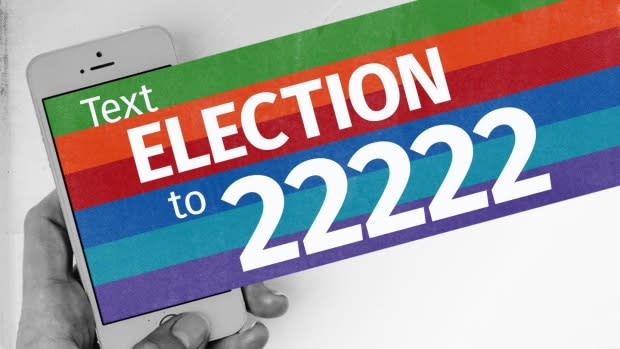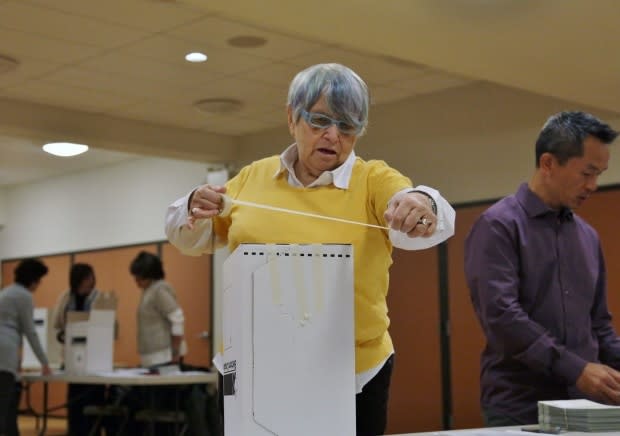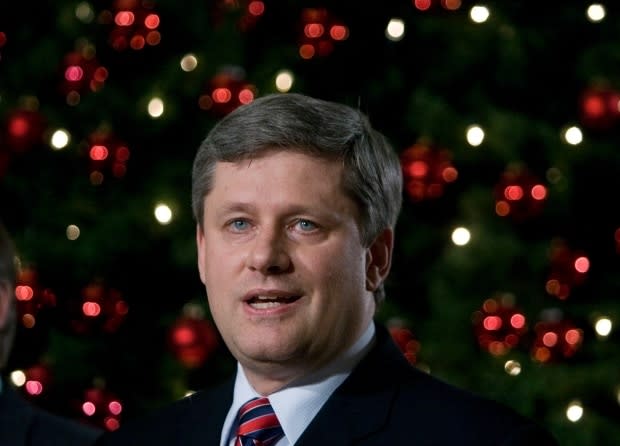Where do ballot boxes go overnight during the advance vote? Someone's house
It's just over a week until election day and our inboxes have been stuffed with your election questions. Certain topics keep coming up — we've broken down strategic voting, LGBTQ issues and defence, among others. But it's your targeted, specific questions that keep things interesting, on topics we admittedly hadn't thought of.
That hasn't stopped us though. We've gone digging for answers and present to you some of the most interesting we've had in the past few days. To send us your question, text ELECTION to 22222 — and who knows, it may show up in a future article.
Where do ballot boxes go overnight during the advance vote?
To someone's house, specifically the home of that polling station's deputy returning officer (DRO) or central poll supervisor (CPS). But a few steps have to take place before that happens.
When voting is done for the day, the box is sealed and signed by the DRO, poll clerk and candidate representatives if they are there. The CPS checks the box to make sure all that has been done. The box is then put in an "official transport bag" and taken home for the evening. It returns the next day to hold more ballots. While the protocol specifically says "home", it also allows for ballot boxes to be locked up in Elections Canada offices overnight.
During the gap between the end of advance polls and election night, the boxes are kept with that poll's DRO or CPS until they are opened and ballots are counted.

If the Liberals are defeated, will you still get a carbon tax rebate?
When the Liberal government brought in the carbon tax, it offset the extra costs to consumers with a tax rebate — officially called the Climate Action Incentive.
Canadians living in provinces without their own carbon pricing policy — Saskatchewan, Manitoba, Ontario and New Brunswick — were able to apply for the rebate for the first time on their 2018 returns, just before the tax came into effect Apr. 1, 2019. It was meant to put the money in people's pockets before, for example, the price of gas in their province went up.
If the Liberals remain in power, they've said the rebate will continue to be paid out annually.
The Finance Department says that since Canadians have already received the 2019 rebate, it will be up to whatever party forms government whether to include the incentive on tax forms Canadians will fill out in spring 2020.
The Conservatives have vowed to kill the Liberals' carbon tax if the party forms government after the Oct. 21 election, which, one would assume, would include the rebate. The NDP has said it would keep the Liberals' carbon tax in place — with some tweaking — along with the rebates, but that the rebates would no longer go to the wealthiest Canadians.
Does Vote Compass get updated throughout the campaign?
Yes, party positions are updated in Vote Compass based on speeches and new policy announcements made throughout the campaign. So you may notice a little bit of movement here and there.
However, Vote Compass is an aggregate of all policy positions a party has, so the policy shift would have to be pretty substantial to have an effect on where a party is currently positioned.
Why are elections held every four years?
This dates back to Stephen Harper's first term as prime minister.
His Conservative party campaigned on and successfully changed laws to mandate a fixed election date every four years. Harper likened this legislation to laws in B.C. and Ontario. Opposition parties can still force an election should a minority government lose confidence.
Prior to this, governments were guided by the Charter of Rights and Freedoms, which provides for a maximum of five years between elections.

Can I use a crayon to mark my ballot?
Yes, this is a real question we received, and yes, you could technically use a crayon to mark your ballot. However, there are some things to keep in mind before you hustle into the polling booth with your box of Crayolas.
The mark on the ballot is at the discretion of the DRO. That includes the writing utensil used to mark it. If the utensil's mark is distinctive enough to identify who the elector is, your vote could be in jeopardy.
If you go in to vote flailing your crayon around, that could be make things pretty distinctive. But if you keep quiet, it shouldn't be a problem.
Where do the parties stand on vaping?
In the wake of what's believed to be Canada's first case of respiratory illness linked to vaping, a group of health organizations have called for immediate political action, telling the parties that vapes need the same restrictions as tobacco. Here's where the parties stand.
Liberals: Restrictions around vaping products were put in place when the products were legalized last year, but Health Canada said in September it consulted with experts and researchers on proposed new regulatory measures to further restrict vaping product advertising to protect youth, including restricting the display of vaping products at points of sale. Leader Justin Trudeau has said his party's decisions will be based on evidence.
Conservatives: We reached out to the Conservatives to ask what specific measures they might propose around vaping but they have yet to respond. Leader Andrew Scheer answered a question about vaping last month, suggesting his party would take a similar approach it did when it came to tobacco regulations and making them less enticing to young people.

New Democrats: The NDP promise it would issue an immediate interim order to stop the advertising of vaping products to children under 18. The party says it would immediately review regulations to ensure patient safety, for example, by limiting the level of nicotine in vaping products. Like Trudeau, leader Jagmeet Singh stresses decisions will be based on evidence and science.
Greens: The Greens' platform doesn't mention vaping or e-cigarettes specifically. However, in comments to Parliament in January 2018, leader Elizabeth May spoke of the need to regulate the vaping industry, while acknowledging the usefulness of vaping for some trying to quit smoking. "Do we not need to regulate this industry in a way that protects it but also protects the health of Canadians?" she asked.
People's Party: The PPC say vaping should not be regulated to the point where some users choose to abandon it and use cigarettes instead. "We don't believe Canada should follow the U.S. government in banning flavoured vaping products. We trust that Health Canada is monitoring the situation and will make proposals to the government as we learn more about the effects of vaping," the party told CBC News.
Bloc: The Bloc have no formal position on vaping.
Until election day, we'll be rounding up your questions and answering some in articles like the one you just read. If you've got questions, text "ELECTION" to 22222 or send Haydn an email at haydn.watters@cbc.ca. He'll try his hardest to get you an answer — though his inbox is filling up now the election is creeping closer.


